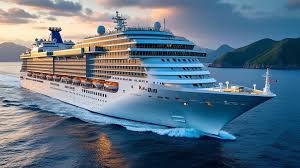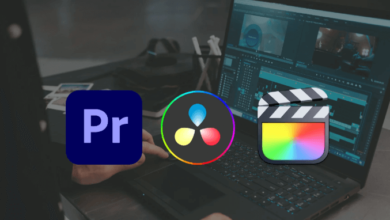The Science Behind Smooth Sailing and How Technology is Changing Cruises

The image of a cruise ship gliding effortlessly over calm blue waters might appear serene and timeless, but behind that sense of tranquility lies a complex web of science and technology. Modern cruise ships are marvels of engineering, and their ability to offer a smooth, stable, and enjoyable journey—despite the unpredictable nature of the ocean—is thanks to decades of research and ever-advancing innovation.
From sophisticated hull designs to cutting-edge stabilizers, navigation systems, and sustainability efforts, technology is transforming the cruise experience in ways most passengers never see. Whether you’re sailing through the warm Caribbean or venturing along the chilly coastlines of an Alaskan cruise, today’s vessels are engineered to keep comfort and safety at the forefront.
The Hydrodynamics of Hull Design
At the heart of a smooth cruise lies the shape of the ship itself. The hull—the body of the ship—has evolved considerably in recent decades. Cruise lines invest heavily in research and development to design hulls that cut through water efficiently, reduce drag, and improve fuel consumption.
Hydrodynamic efficiency doesn’t just impact speed and fuel economy; it plays a major role in passenger comfort. The less resistance the ship faces, the less vibration and noise passengers experience on board. New hull shapes, such as bulbous bows, help to minimize the wave-making resistance that causes rocking and pitching, especially important on routes known for rougher seas.
Stabilizers: Balancing the Waves
One of the most important pieces of technology ensuring smooth sailing is the ship’s stabilizer system. These are fin-like appendages that extend from the sides of the ship beneath the waterline. Using gyroscopic sensors and real-time data, stabilizers actively counteract the rolling motion caused by waves.
This technology is especially vital in open waters or regions where the sea can be unpredictable—like the North Pacific during certain Alaskan cruise itineraries. Stabilizers are automatically deployed and adjusted depending on the ship’s speed, sea conditions, and direction of travel. Most passengers are blissfully unaware of this behind-the-scenes work, but it’s the reason many modern cruises feel surprisingly smooth even when the weather is less than ideal.
Navigation and Weather Prediction
The bridge of a cruise ship has come a long way from compass and paper charts. Today’s vessels are equipped with advanced GPS systems, radar, sonar, and real-time satellite weather tracking. This tech doesn’t just guide ships safely from port to port; it allows crews to proactively adjust routes based on wind patterns, wave height, and storm forecasts.
This capability is particularly important on longer or more remote journeys. For instance, while cruising through the intricate fjords and glacier-fed bays of Alaska, captains rely on dynamic navigation tools to thread massive ships through tight passages and shifting ice conditions.
Navigation systems can also help avoid rough patches of ocean entirely. Many cruise lines now promise “smooth sailing itineraries” that are strategically planned around seasonal sea conditions, making use of predictive models that use decades of maritime data.
Power and Propulsion Upgrades
Cruise ships have traditionally relied on diesel engines, but environmental concerns and operational efficiency have driven innovation in propulsion systems. Modern ships increasingly use podded propulsion units—rotatable electric engines housed in pods beneath the ship. These units provide superior maneuverability, better fuel efficiency, and smoother turns, all of which contribute to a steadier ride for passengers.
Additionally, many new ships are incorporating liquefied natural gas (LNG) propulsion and hybrid electric systems, which reduce engine noise and vibrations. These quieter engines are particularly noticeable on expedition-style cruises, such as those exploring the more pristine areas of Alaska where environmental impact is closely regulated.
Smart Cabins and Real-Time Monitoring
Technological improvements don’t stop at the ship’s mechanical functions. Passengers today benefit from a range of innovations that enhance comfort and convenience. Smart cabin climate control, real-time location apps, and even predictive maintenance systems ensure that any issue on board is detected and resolved quickly—often before guests are even aware of a problem.
Real-time ship health monitoring, sometimes referred to as “digital twins,” allows engineers to observe a virtual model of the ship’s entire system. This includes stress levels on the hull, performance of engines, stabilizer efficiency, and more. Constant diagnostics help preempt mechanical issues that could otherwise disrupt a voyage.
Sustainability and Future Trends
A smooth cruise isn’t only about how the ship feels while sailing—it’s also about cruising with a clearer conscience. The cruise industry is under increasing scrutiny to reduce its carbon footprint, and many companies are responding with serious investments in sustainable technology.
Ships are now equipped with advanced wastewater treatment facilities, onboard recycling systems, and even solar panel arrays. Some vessels are being designed to plug into shore power while docked, reducing emissions in port cities. These innovations not only preserve the destinations passengers come to enjoy—like the pristine waters and wildlife habitats of Alaska—but also contribute to a cleaner, more stable maritime environment overall.
Looking ahead, expect artificial intelligence and machine learning to take an even greater role in cruise navigation and onboard operations. Autonomous course corrections, personalized cruise experiences, and fully optimized energy usage may all become standard in the near future.
See also: Top Amul Summer Products to Keep You Cool and Refreshed
The Invisible Hand of Innovation
As passengers lounge by the pool or take in a show, few realize just how much scientific precision is at work beneath their feet. From the moment a cruise ship sets sail to the final docking maneuver, dozens of systems operate in harmony to ensure a safe, smooth, and enjoyable voyage.
Whether you’re enjoying the gentle sway of a tropical breeze in the Caribbean or gazing at icy peaks from the deck of an Alaskan cruise, you’re also experiencing the culmination of maritime engineering at its finest. The smoother the cruise, the more invisible the science behind it becomes—and that’s the ultimate testament to its success.



